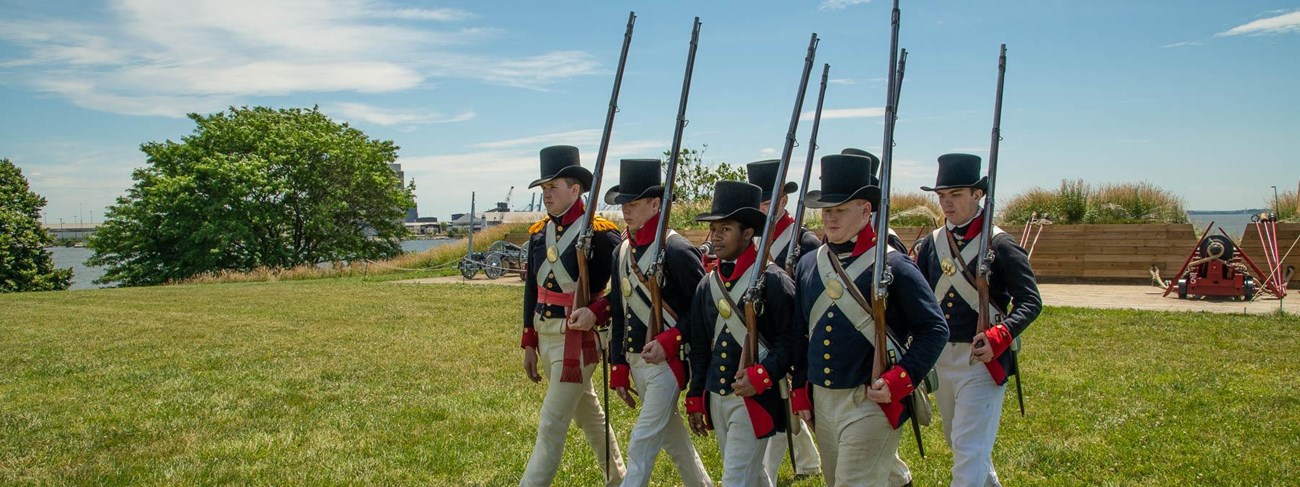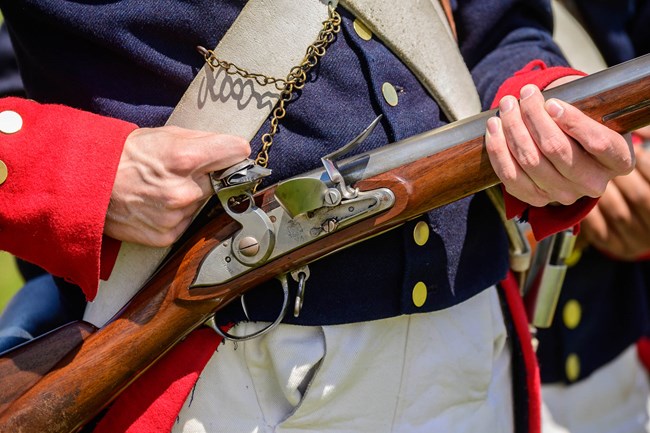
NPS/Tim Ervin 
NPS/Tim Ervin During the War of 1812, the United States federalized the state militias in April 1813 and again in August 1814. In August, Brigadier General Winder, by direction of the War Department, ordered the designated militia of Maryland, the District of Columbia, and Virginia, to be drafted into federal service under the President Madison's call of July 4th. Three units of Maryland Militia were ordered into the service of the United States under the Articles of War and sent to Fort McHenry. These units were the Baltimore Fencibles Artillery Company under Captain Joseph Nicholson, Washington Artillery under Captain John Berry, and Baltimore Independent Artillery under Lt Commanding Charles Pennington. A total of about 255 men comprised these units and were quartered within the star fort during their service. Private Isaac Monroe of the Baltimore Fencibles recounted being called to defend Baltimore at Fort McHenry during the wake of battle: “We were all immediately rallied, and arrived at the Fort before 12, although the rain poured down in torrents. On our arrival we found the matches burning, the furnaces heated and vomiting red hot shot, and everything ready for a gallant defense.” 
NPS The artillery units under Captain Nicholson were assigned to the bastions of the fort during the Defense of Baltimore. Each point of the star is called a bastion. Bastions, or the points of the star in which Fort McHenry was shaped allowed for crossfire, so that the artillerymen could aim the cannon to cover all approaches. Each bastion had four 24-pound cannon that fired over the top of the walls. The men of the Washington Artillery and Baltimore Independent Artillery manned the lower water batteries which featured 18 and 36 pounder guns. |
Last updated: September 10, 2020
